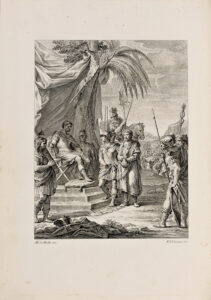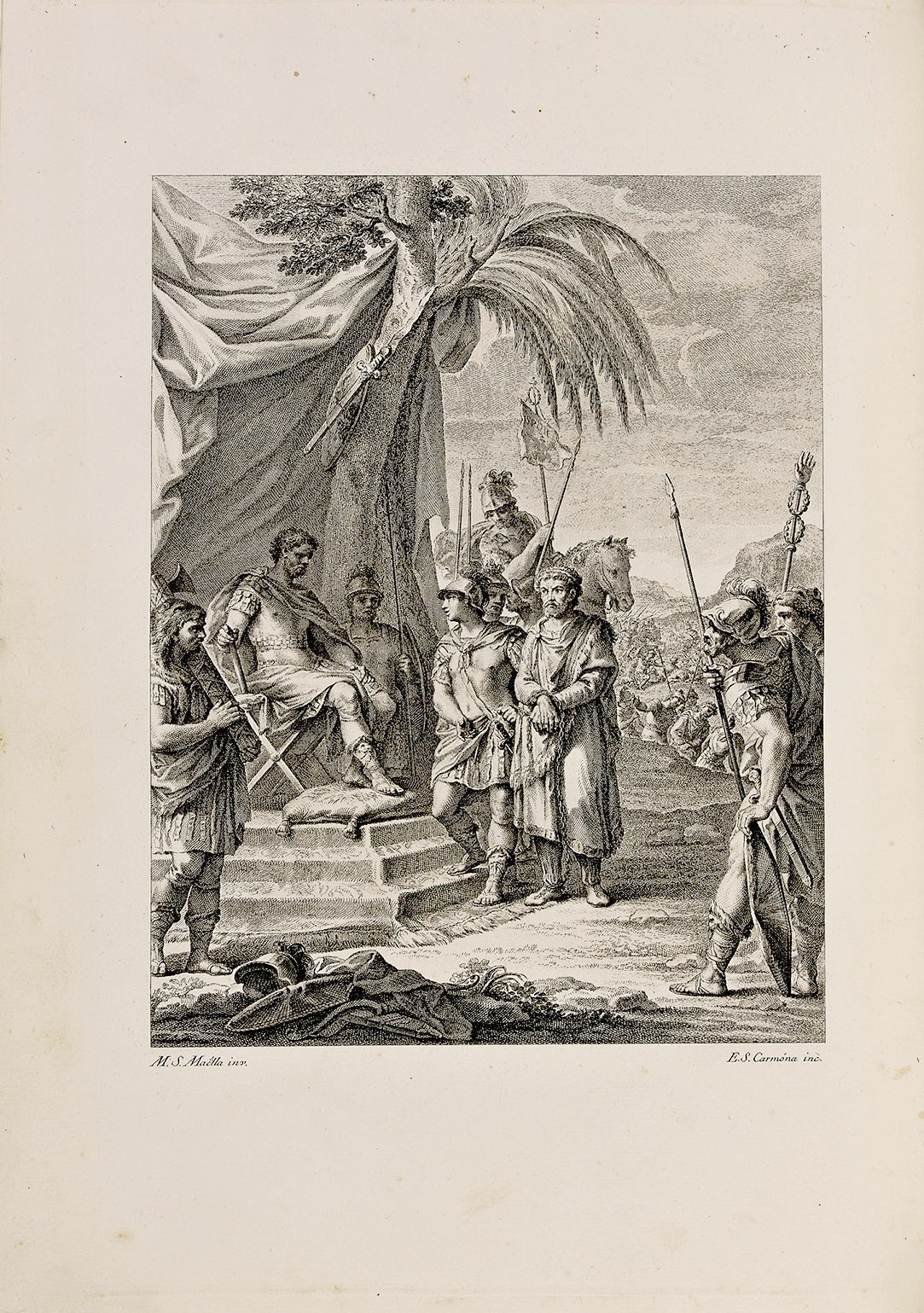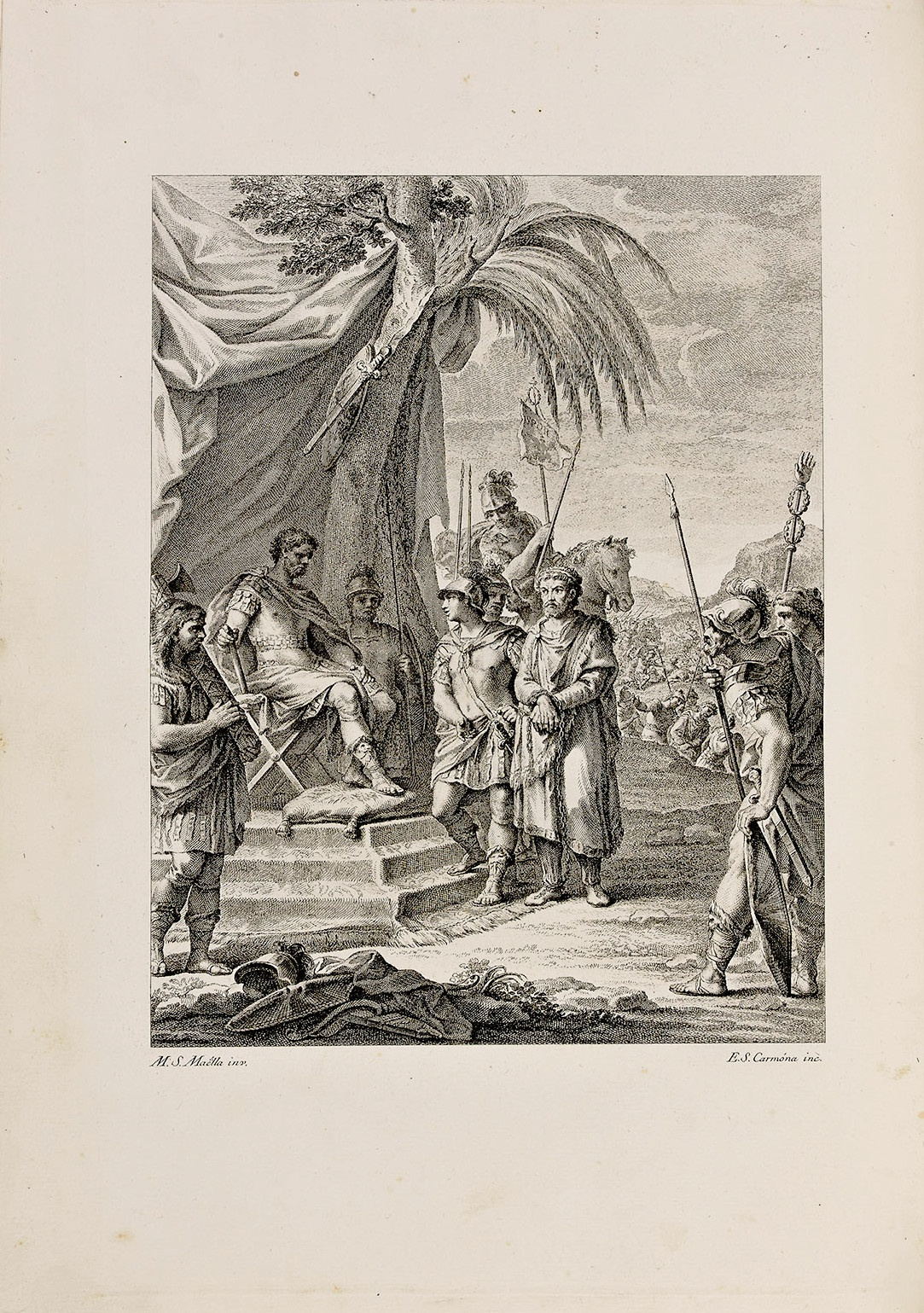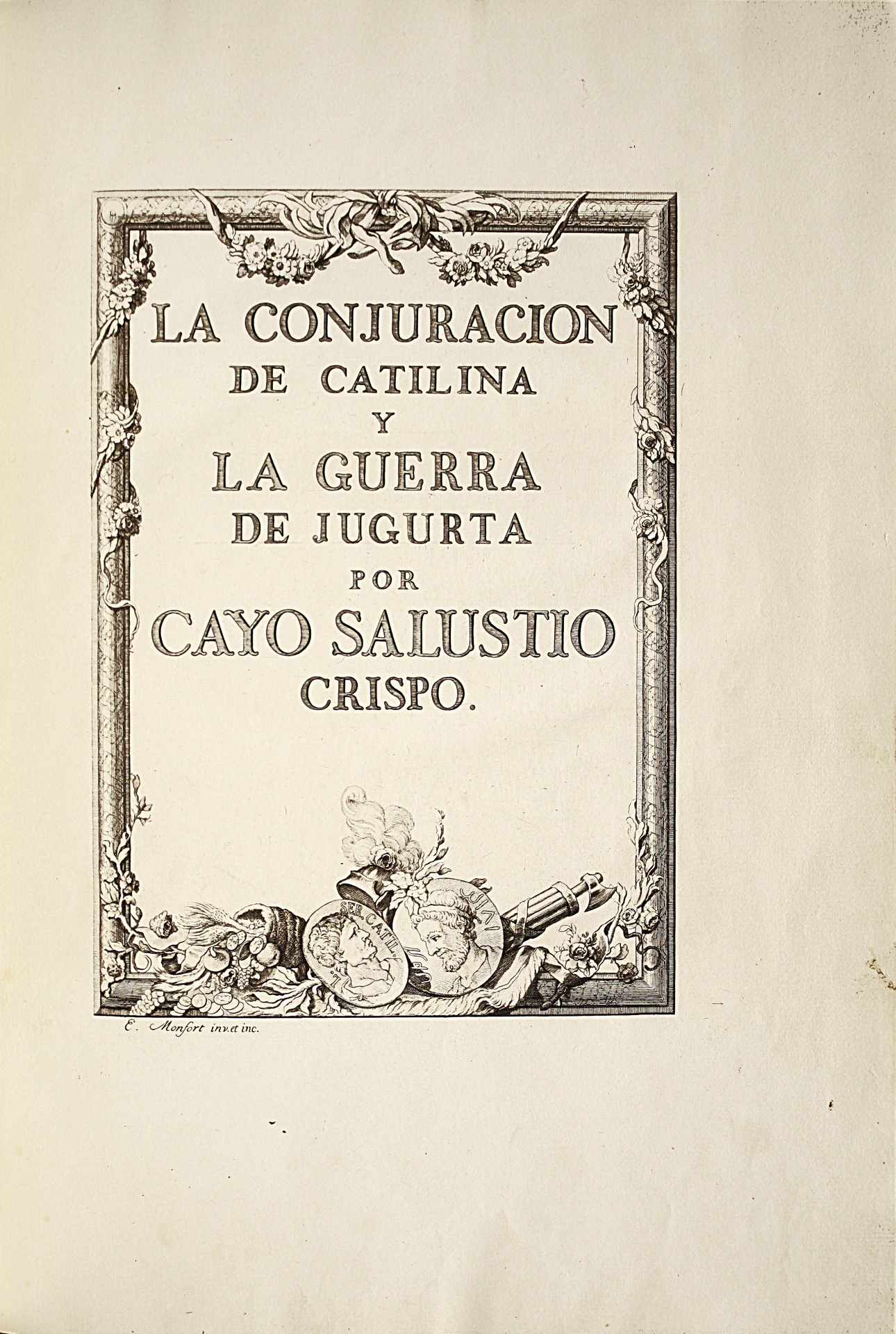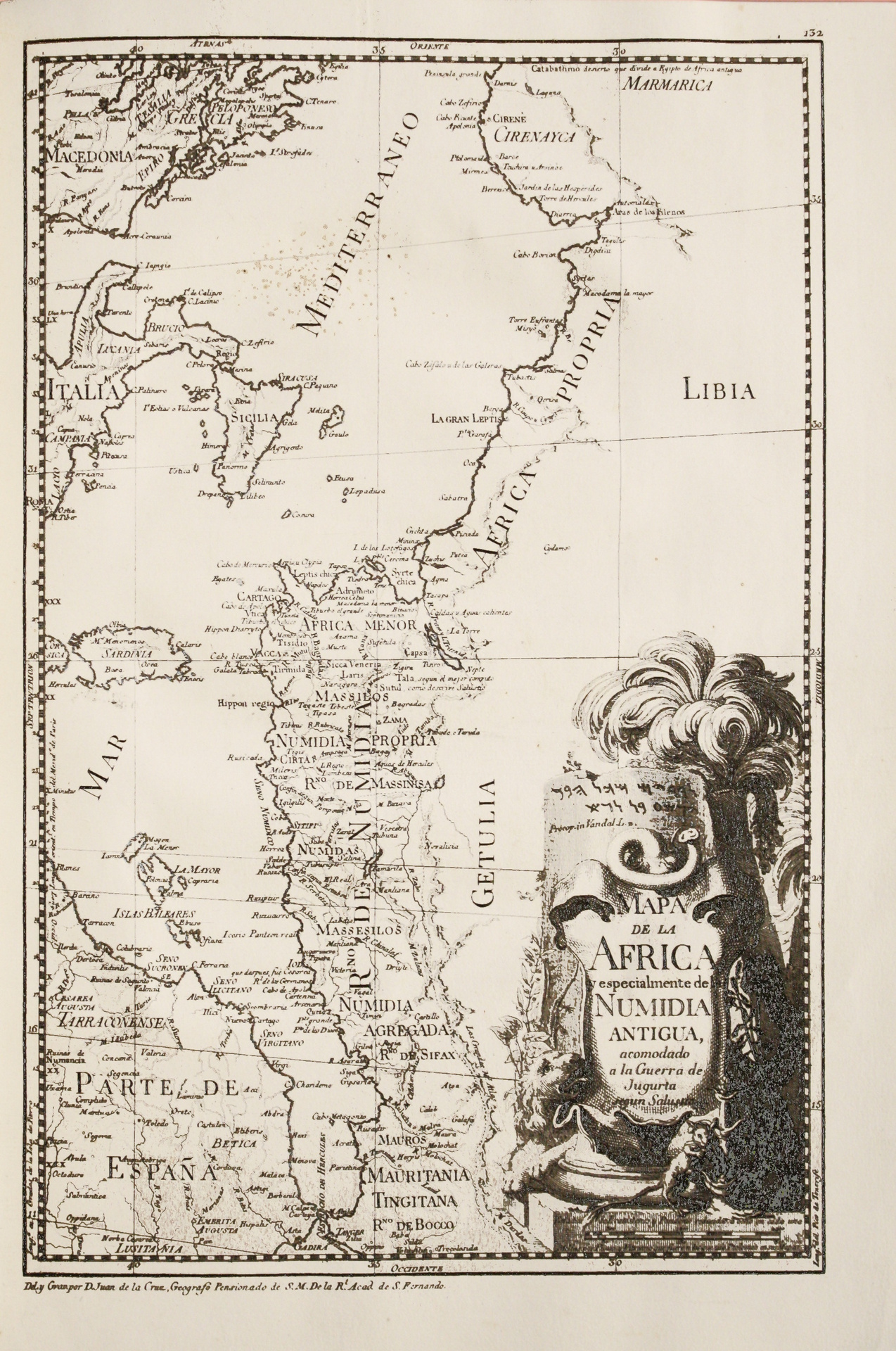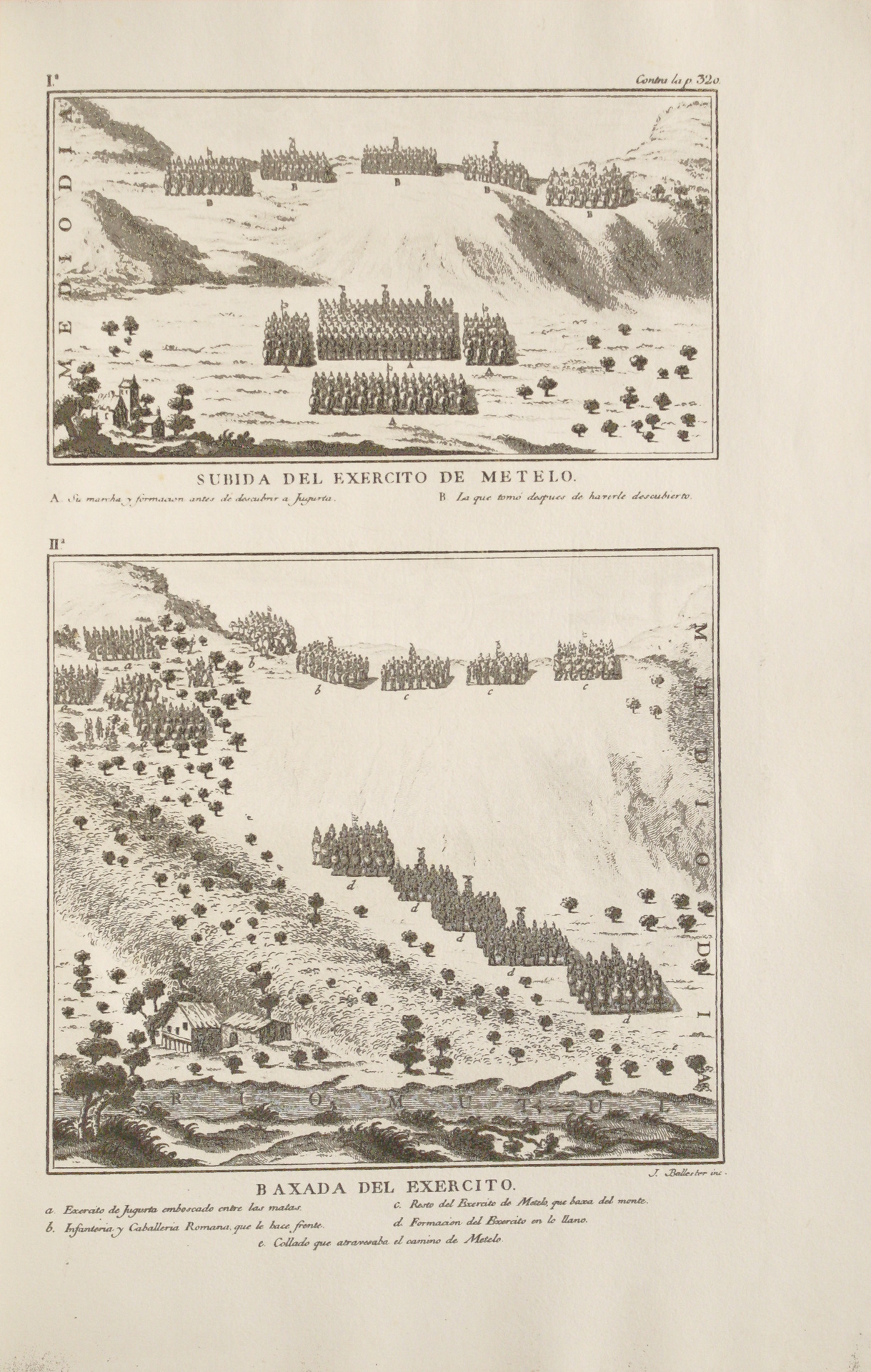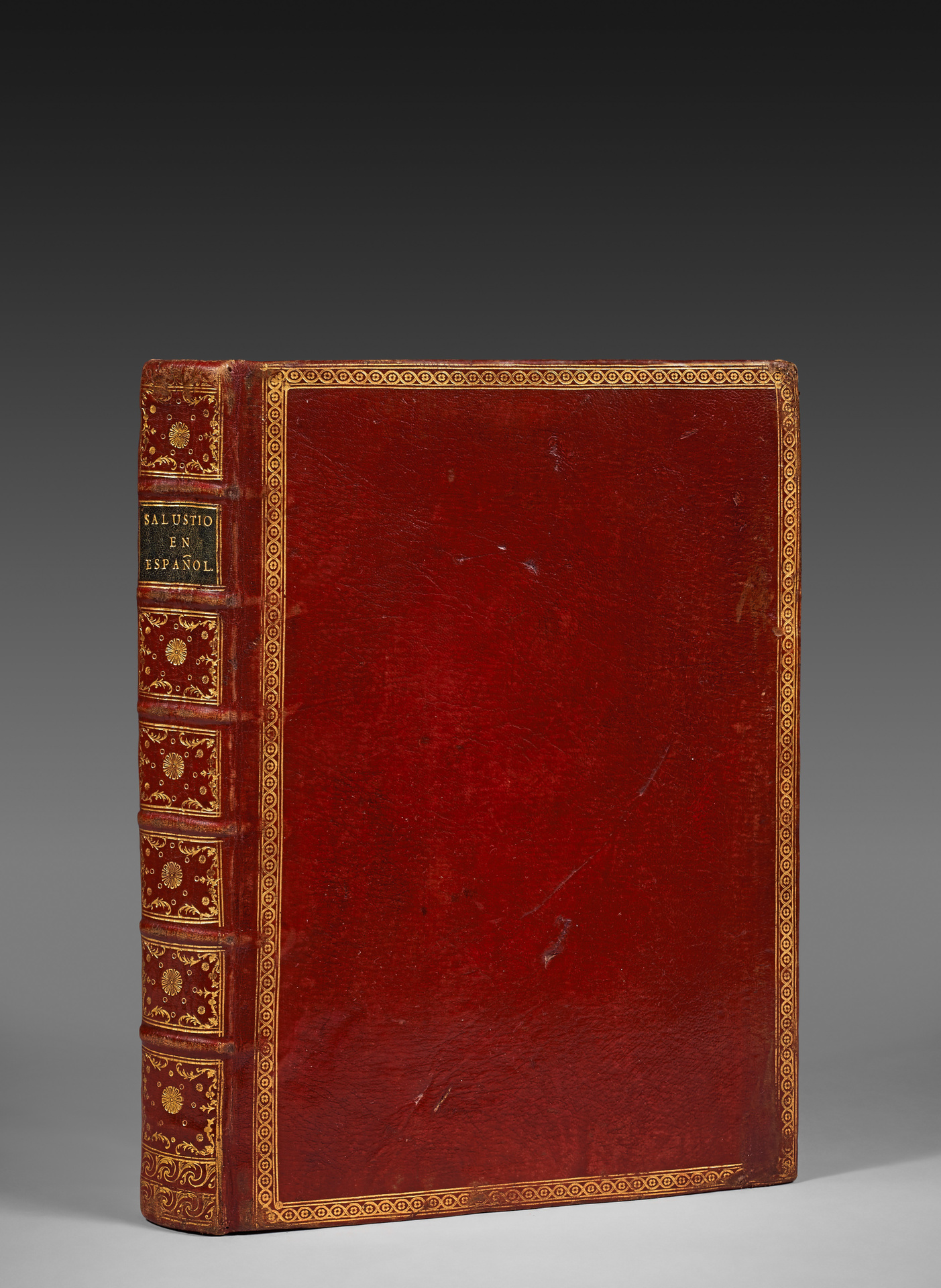Madrid, J. Ibarra, 1772.
Folio [355 x 248 mm] of (10) ll. including 1 frontispiece and 1 portrait, 395 pp., (1) p., 8 plates out of pagination and 1 map. Light waterstain on 2 ll. Contemporary red morocco, gilt border around the covers, spine ribbed and richly decorated with gilt fleurons, green morocco lettering piece, gilt inner border, blue doublures, gilt borders. Contemporary binding.
First issue of this famous illustrated edition, one of the masterpieces of Spanish typography and one of the most perfect books produced in the 18th century by an admirer and friend of Bodoni, Joaquin Ibarra, printer of king Charles III of Spain, himself an amateur printer.
The Huth Library, 1294; Brunet, V, 91; Cohen, 938; Palau, XVIII, 425; Updike, Printing types, II, 71-73; Dibdin, II, 387.
“This edition of Sallust’s translation, made by the Infante Don Gabriel, under the direction of Fr. Perez Bayer, his tutor, is rightly considered as a typographic masterpiece.” Brunet, V, 91.
Very beautiful illustration, entirely etched; it contains many letters and ornamental initials, many illustrations within the text, 32 remarkable cuts or tail-pieces by Fabregat and Ballester or by Salvador Carmona, after M.S. Maëlla, a very beautiful engraved title and, out of text, a portrait of Sallust, a map of Africa engraved by Joan de la Crux, six plates of battles, coins and armors, and two figures by Salvador Carmona, after M.S. Maëlla, one at the beginning of La Conjuracion de Catilina, the other at the beginning of La guerra de Jugurta.
“Withdrawn, after the death of his protector, Cesar, in the sumptuous villa surrounded by gardens which he had made built in Rome, Sallust dedicated his work to the glorification of the Emperor and to the defense of a haughty political moral; rigorous stylist, incisive and daring, he follows in Thucydides’ footsteps and remains, in the modern sense of the term, the first historian of Rome.”
This translation of Sallust’s two works, La Conjuracion de Catilina and La Guerra de Jugurta, given by Brother Perez Bayer, was attributed to Infante Don Gabriel, whom this religious was the tutor. The original Latin text is in Roman and in double column below the Spanish version in italics. This first edition if the only one containing the Dissertation of Brother Perez Bayer on the Phoenicians’ alphabet and language.
A copy from the very first issue, on white watermarked paper, without azure and with the figures before the letter, printed for Infante Gabriel and intended to be distributed among the Royal entourage.
This copy was thus offered by Infante Gabriel to the Duchess of Wharton in 1774 as evidenced by this handwritten note on the half-title: “Ce livre est un présent de Son Altesse Royale l’Infant Don Gabriel de Bourbon à la Duchesse de Wharton, présent si précieux qu’elle gardera à jamais et qu’elle désire être conservé en sa famille par reconnaissance au très illustre Donateur. En l’année 1774.”
Miss O’Byrne, daughter of an Irish Colonel exiled in Spain, and maid of honor to the Queen of Spain, became the Duchess of Wharton when the Duke of Wharton, who fell madly in love with her, married her in 1729.
It is bound in an elegant contemporary red morocco binding.
The dimension of the volume (one of the largest recorded, height: 355 mm), the richness of the illustration, make it one of the masterpieces of 18th century book illustration.
Provenance: Duchess of Wharton, Gouvernor Wybicki (handwritten note in Polish on the half-title explaining that after the capture of Tarragon, where the Polish army showed bravery this book was given to Governor Wybicki by one of the grenadiers, the Governor being known for the services he had given to Poland).
